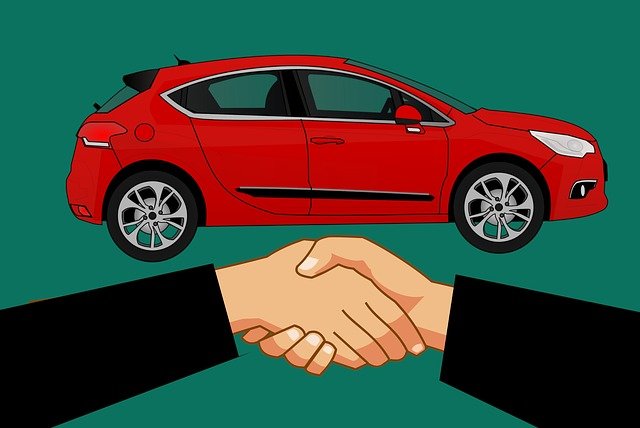A first-time car buyer would know very little about how to buy vehicle insurance. Bought to protect your wallet from potential repairs and damages to your vehicle as well as third-party vehicle, motor insurance is an important decision. Plus, all car owners must have valid car insurance to be able to drive their cars on Indian roads.
There are different types of car insurance policies that come with a wide range of add-ons or riders and features to choose from. So, if you are planning to buy your first car then be prepared with all you need to know about buying car insurance.
Car Insurance Tips: All about car insurance types
There are two broad categories of motor insurance you can choose from. Third-party insurance is the mandatory insurance that you must have to drive a car in India. The Motor Vehicle Act 1988 imposes heavy penalties and imprisonment if a car is driven without third-party insurance. Third-party insurance protects the liabilities that arise out of an accident and consequent damages to a third-party person or property.
Comprehensive insurance is a combination of third-party insurance and own damage insurance. Own damage insurance covers the damage caused to the insured motor car due to accident, theft, fire, calamities etc. Since third-party insurance is mandatory, you can either go for separate own damage insurance or get both the covers with comprehensive insurance.
What are riders or add-ons?
There are different types of add-ons or riders that you can go for when you buy vehicle insurance. Some of the commonly purchased car insurance riders are:
Zero depreciation – Depreciation of your car reduces the claim settlement amount that you receive. Make sure you buy this rider in the first five years consecutively to get full value against the claim raised.
Consumable – It covers the cost of serviced consumables such as oil, filter, nuts and screws, which would have been otherwise borne out of pocket.
Tyre protect – Car tyres need to be replaced in case of tyre bursts, deep cuts, bulges and unevenness. With the tyre protect add-on, you get a claim on the tyre replacement cost.
Passenger cover –Injury and fatality in a car accident can be extended to the whole family with the passenger cover. You get protection only for yourself in a regular comprehensive cover.
Roadside assistance – Regular motor insurance coverage starts from the point where your car reaches a garage. But with roadside assistance, you get on-the-spot repair and towing services in the event of a breakdown.
Return to invoice – In the unfortunate event of the car getting destroyed beyond repair, the return to invoice cover makes sure that your insurer pays you the complete invoice value of the car.
Assess your insurance needs
A variety of riders are fine, but you also need to assess what is it that you need. There is no “one size fits all” in motor insurance. Choose the add-ons that you need as a part of your car insurance. Some riders provide engine coverage, but it comes to use mostly in flood-prone areas. Similarly, a car meant for a city ride may do without roadside assistance. If you drive around your family often, a passenger cover is recommended.
Understand and compare the insurance terms
While choosing your motor insurance policy, compare the quotes provided by different insurers. Go through their respective policy documents and see which policy suits your need the most. Besides, there are many commonly used terminologies that you must understand when you buy vehicle insurance.
IDV – The value of a car reduces the moment it is driven out of the dealer showroom. With each passing year, its Insured Declared Value (IDV) reduces due to depreciation. IDV is the value on which the coverage of the policy and its premium is calculated. It is also considered while calculating claim settlement.
Deductible – A compulsory deductible is a minimum amount that the policyholder needs to pay before raising a claim. It is an out-of-pocket expense for the policyholder. You can also opt for a voluntary deductible, which will lower your premium but increase your financial burden in the event of a claim.
Network garages – These are garages where you can get your car repaired without exchanging cash. The larger the number of garages your insurer has under its network, the more convenient it is for you to get a cashless repair done.
No Claim Bonus – No Claim Bonus is a discount offered by the insurer on every policy renewal. It can be availed only if you hadn’t raised a claim during the previous policy period. It can be availed from your first motor insurance policy renewal onwards.
How to raise a claim
Insurers generally process cashless claims and claim reimbursements. With a wide network of garages, you can go for a cashless claim. In reimbursement claims, you pay the repair cost and then raise a claim. Check the claim process of your insurer before buying car insurance. Ideally, the insurer should provide an online claim option along with the traditional over-the-phone and in-person options. Try to find out the reputation and speed of the insurer when it comes to settling claims.
Equipped with these tips, you should be ready and aware of the relevant aspects that you must consider when buying vehicle insurance for your brand-new car. Always keep your car insurance policy handy when you drive around and don’t forget to renew it on or before the policy expiry date.


